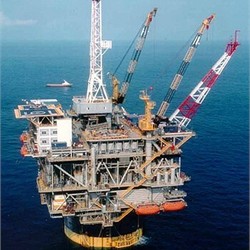“Property Damage” is not always “Property Damage”
May 7, 2015 Chevron’s “Genesis Spar” offshore rig (right) was damaged by the installation of substandard bolts. Chevron sued Aker Maritime and won; Aker in turn sued Oceaneering for indemnity and won; Oceaneering settled and sued its insurer. Sidestepping whether a “sistership” exclusion barred coverage, the Fifth Circuit found that Oceaneering had not proven “property damage” within the meaning of the policy.
Chevron’s “Genesis Spar” offshore rig (right) was damaged by the installation of substandard bolts. Chevron sued Aker Maritime and won; Aker in turn sued Oceaneering for indemnity and won; Oceaneering settled and sued its insurer. Sidestepping whether a “sistership” exclusion barred coverage, the Fifth Circuit found that Oceaneering had not proven “property damage” within the meaning of the policy.
To be sure, a Fifth Circuit panel used that phrase in the original Chevron litigation, and a second panel discussed the type of damage at issue in the indemnity case. But because those panels wrote about distinct issues from the coverage question in this case, and because “Oceaneering rests its argument that there was coverage . . . on these two prior opinions,” the Court affirmed judgment for the insurer. American Home Assurance Co. v. Oceaneering Int’l Inc., No. 14-20222 (April 27, 2015, unpublished).
See generally Towne v. Eisner, 245 U.S. 418 (1918) (Holmes, J.) (“A word is not a crystal, transparent and unchanged; it is the skin of a living thought and may vary greatly in color and content according to the circumstances and time in which it is used.”); Lewis Carroll, Through the Looking Glass (“”‘When I use a word,’ Humpty Dumpty said, in rather a scornful tone, ‘it means just what I choose it to mean — neither more nor less.'”)